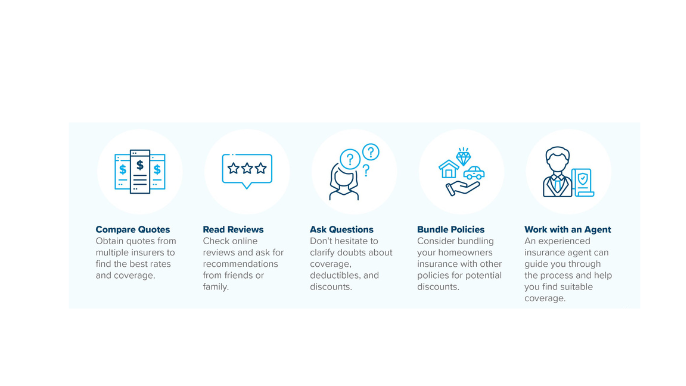Buying your first home is a monumental milestone – a blend of excitement, pride, and maybe just a touch of overwhelm. Amidst the flurry of paperwork and decisions, securing the right home insurance policy might seem like another complex hurdle. But fear not, first-time homeowners! This guide is designed to break down the essentials, making home insurance clear, manageable, and ultimately, a vital layer of protection for your new sanctuary.
Think of your home insurance policy as a financial shield for your most significant investment. It’s there to help you recover financially from unexpected events that could damage or destroy your property and its contents, or even protect you if someone gets injured on your property. Understanding the basics now can save you significant stress and expense down the line.
The Core Components: What Does a Home Insurance Policy Cover?
Most standard home insurance policies are structured to provide several key areas of coverage. Here’s a breakdown of what you’re typically looking at:
- Dwelling Coverage: This is the backbone of your policy. It covers the physical structure of your house, including the walls, roof, foundation, and any built-in features like plumbing, electrical wiring, and heating/cooling systems. It essentially covers the cost to rebuild your home if it’s damaged or destroyed by a covered peril (more on that later). The coverage limit here should generally be enough to cover the cost of rebuilding your home at current construction prices, not necessarily the market value of your property.
- Example: If a fire devastates your house, your dwelling coverage would help pay for the cost of rebuilding it, up to your policy limit.
- Other Structures Coverage: This covers structures on your property that aren’t directly attached to your house, such as a detached garage, shed, fence, or driveway. Typically, this coverage is a percentage (e.g., 10%) of your dwelling coverage limit.
- Example: If a strong storm blows down your detached shed, this coverage would help pay for its repair or replacement.
- Personal Property Coverage: This protects the contents of your home, including furniture, clothing, electronics, appliances, and other personal belongings. This coverage usually applies even if these items are temporarily away from your home. Policies often have limits on certain high-value items like jewelry or artwork, so you might need to schedule (specifically list and insure) these separately.
- Example: If your laptop is stolen from your home, or if your furniture is damaged in a covered fire, your personal property coverage can help replace these items (often at their current value, depending on your policy type).
- Loss of Use Coverage (or Additional Living Expenses – ALE): If a covered event makes your home uninhabitable, this coverage helps pay for additional living expenses you incur while your home is being repaired or rebuilt. This can include temporary housing costs, meals, and other necessary expenses beyond your usual budget.
- Example: If a burst pipe floods your home and you have to stay in a hotel for two weeks while repairs are made, your loss of use coverage can help cover your hotel bill and extra meal costs.
- Liability Coverage: This protects you financially if someone is injured on your property and you are found legally responsible. It can help cover their medical expenses, lost wages, and even legal fees if you are sued. Most policies offer different levels of liability coverage, and it’s often advisable to have a sufficient amount to protect your assets.
- Example: If a guest slips and falls on your icy sidewalk and requires medical attention, your liability coverage could help cover their medical bills and any potential legal costs.

Understanding Covered Perils: What Events Are Typically Included?
A “peril” is a specific event that can cause damage or loss to your property. Standard home insurance policies typically cover a range of perils, including:
- Fire and smoke
- Windstorms and hail
- Lightning strikes
- Explosions
- Vandalism and malicious mischief
- Theft
- Damage from aircraft or vehicles
- Riots or civil commotion
- Certain types of water damage (e.g., from burst pipes, but usually not flooding)
Important Exclusions: What’s Typically NOT Covered?
While home insurance offers broad protection, it’s crucial to understand what is typically not covered. Common exclusions include:
- Flooding: Damage from natural flooding is usually not covered by standard home insurance policies and requires a separate flood insurance policy, often through the National Flood Insurance Program (NFIP).
- Earthquakes: Similar to flooding, earthquake damage typically requires a separate earthquake insurance policy.
- Poor Maintenance: Damage resulting from lack of maintenance or neglect is generally not covered. This includes things like a leaky roof that wasn’t repaired over time or termite infestations that weren’t addressed.
- Sewer Backups: Damage from sewer backups or overflows often requires a specific add-on or rider to your policy.
- Pest Infestations: Damage caused by pests like termites, rodents, or insects is usually not covered.
- Intentional Acts: Damage caused intentionally by you or a resident of your household is not covered.
Key Considerations for First-Time Buyers:
- Determine Your Coverage Needs: Think about the value of your home and its contents. Consider the cost of rebuilding your home in the current market, not just what you paid for it. Take an inventory of your personal belongings to estimate their value.
- Understand Different Policy Types: The most common type is an “HO-3” policy, which provides “all-risks” coverage on your dwelling (meaning it covers all perils unless specifically excluded) and named-perils coverage on your personal property (meaning it only covers the perils listed in the policy). Other policy types exist, offering varying levels of coverage.
- Know Your Deductible: The deductible is the amount you pay out-of-pocket before your insurance coverage kicks in. A higher deductible usually means a lower premium (the amount you pay regularly for your insurance), but you’ll have to pay more if you file a claim. Choose a deductible you’re comfortable paying.
- Consider Additional Coverage (Riders or Endorsements): You might need extra coverage for specific situations or high-value items. Common riders include:
- Scheduled Personal Property: For insuring valuable items like jewelry, art, or collectibles.
- Sewer Backup Coverage: To protect against damage from sewer line backups.
- Water Backup Coverage: Broader coverage for various types of water backups.
- Increased Limits: To raise the coverage limits on certain categories of personal property.
- Shop Around and Compare Quotes: Don’t settle for the first policy you find. Get quotes from multiple insurance companies to compare coverage options and premiums. Online comparison tools and independent insurance agents can be valuable resources.
- Read Your Policy Carefully: Once you choose a policy, take the time to read the entire document. Understand your coverage limits, deductibles, exclusions, and any specific conditions. Don’t hesitate to ask your insurance agent any questions you may have.
- Review Your Policy Annually: Your insurance needs may change over time. As you acquire more belongings or make significant home improvements, review your policy to ensure it still provides adequate coverage.
Working with Insurance Providers:
- Independent Agents: These agents work with multiple insurance companies and can help you compare quotes and find the best policy for your needs.
- Direct Insurers: These companies sell policies directly to consumers, often online or over the phone.
- Company Agents: These agents work for a single insurance company.
Protecting Your Investment and Your Peace of Mind:
Navigating home insurance for the first time might seem daunting, but by understanding the core components, common exclusions, and key considerations, you can make informed decisions and secure the right protection for your new home. Remember, your home is more than just bricks and mortar; it’s your sanctuary, your investment, and the backdrop for countless memories. Investing the time to understand your home insurance policy is an investment in your future and your peace of mind. Welcome to homeownership!



